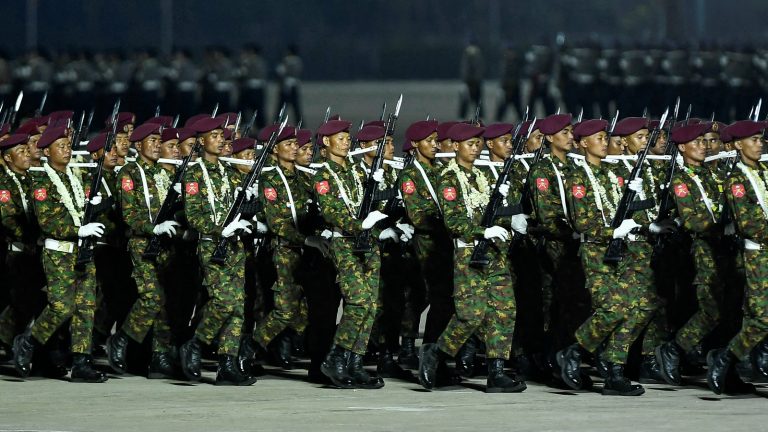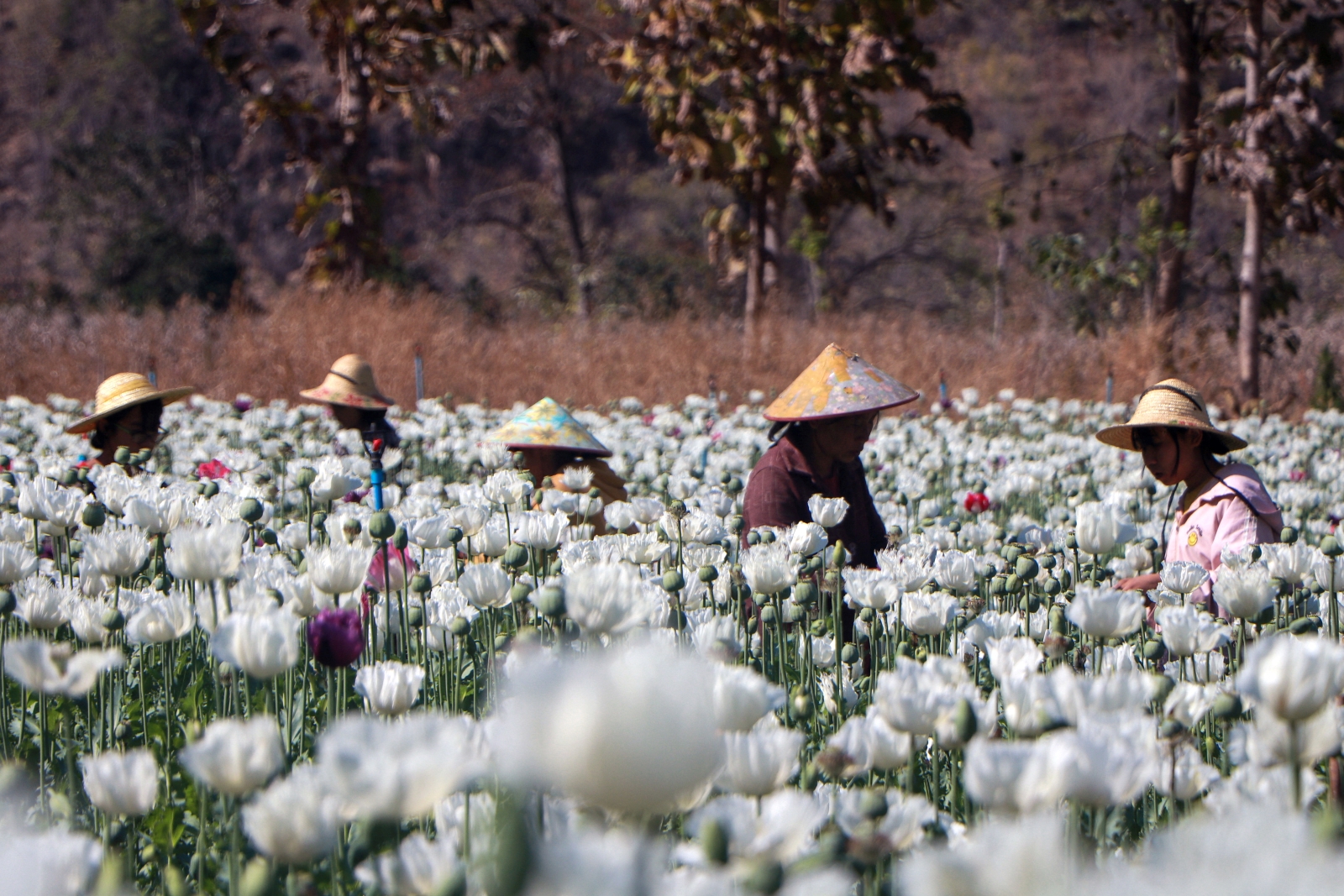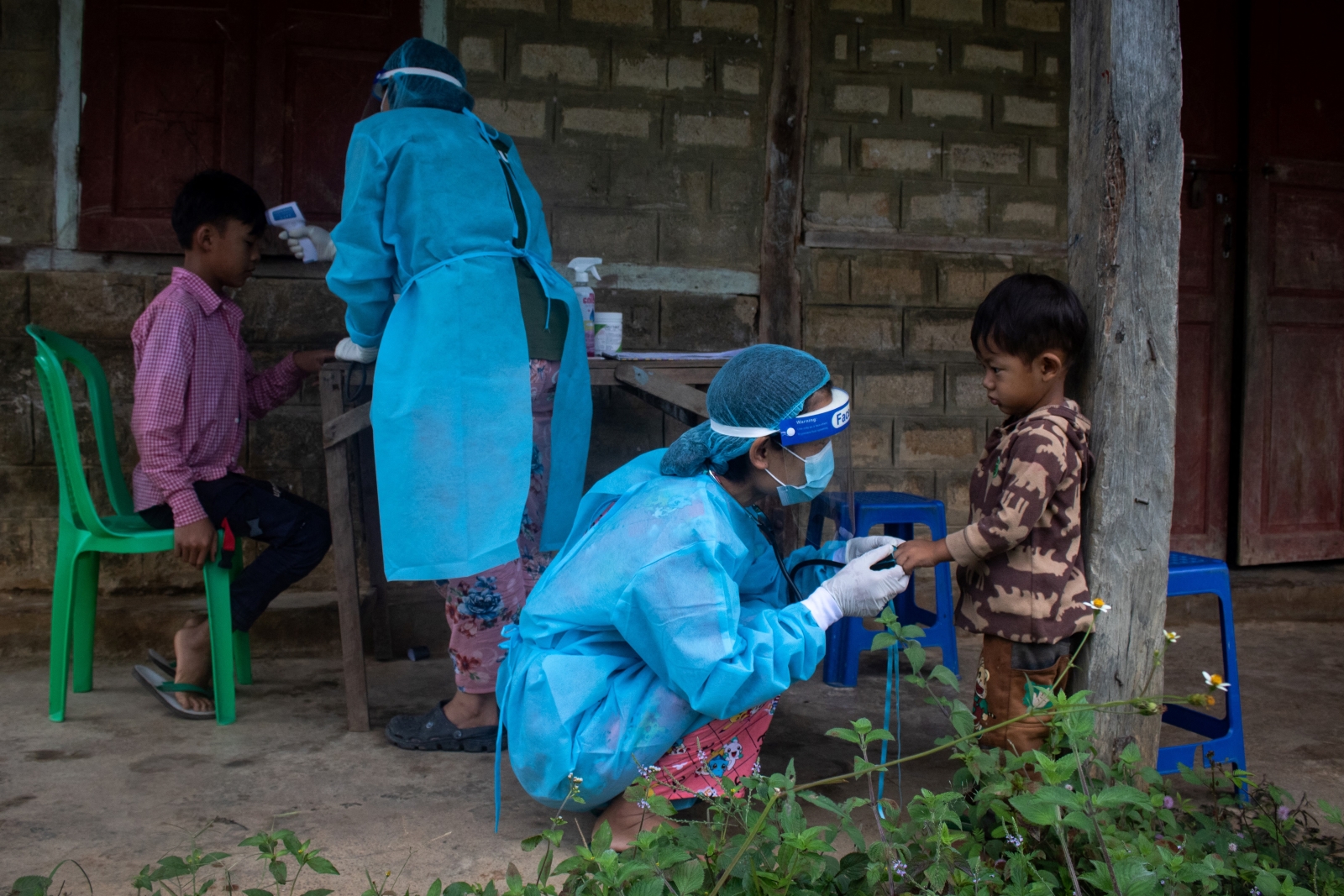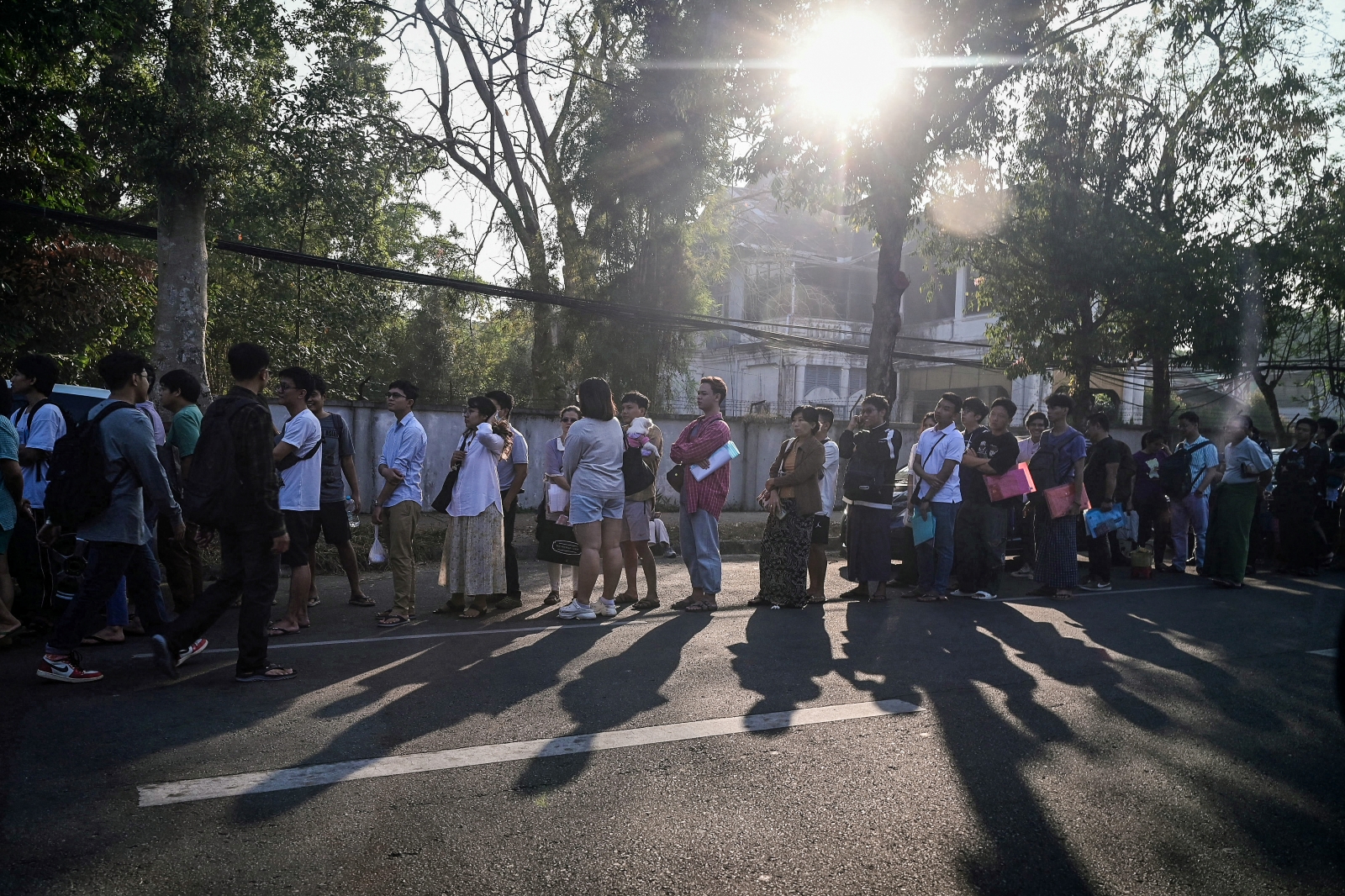In 2012, the Tatmadaw committed to releasing all remaining child soldiers from its ranks. Three years on, it hasn’t.

A sign at Yangon’s central railway station urges the public to report suspected instances of recruitment of children by the military. (Lauren DeCicca / Frontier)
By ALEX BOOKBINDER | FRONTIER
Wherever there are easy pickings, they lurk. At train stations. In markets. Along main thoroughfares, when children are coming home from school. Their targets: poorly-educated and deprived teenage boys, the defenceless ones.
These brokers – working closely with commanders and mid-level officers – are on the hunt for soldiers to fight in the Tatmadaw Gyi, Myanmar’s army.
Although some children are entranced by the idea of having a uniform and a gun, most do not join willingly. “Most of these cases are forced recruitment,” said U Kyaw Sun, a project manager with the Ratana Metta Organisation, which helps to rehabilitate former child soldiers.
Support more independent journalism like this. Sign up to be a Frontier member.
Although it is still Myanmar’s most powerful institution, the military suffers from severe image problems. Five decades of iron-fisted rule has mitigated the prestige of a career in the military; extremely low salaries and brutal conditions limit its appeal even further.
Facing personnel shortages, the army has maintained a longstanding informal policy of recruiting vulnerable children into its ranks, largely against their will. Paradoxically, Myanmar’s military is, at least on paper, an all-volunteer force, although this is not the case in practice.
“[The Tatmadaw] never had an explicit policy that they’d recruit children, at least, not that I’ve ever seen,” said Piyamal Pichaiwongse, the International Labour Organisation’s deputy liaison officer in Myanmar.
“But you have to understand that this has been a military regime for a long time,” Ms Piyamal said. [The military] are the kings. They make the rules. There is no ‘rule of law,’ as they say. And nobody is willing to [challenge] the army,” she said.
But change is happening. In 2012, the military and the UN agreed a joint action plan to eliminate the recruitment of child combatants, and discharge and reintegrate them into society. The Tatmadaw remains one of the world’s few armies with children serving in its ranks, and is listed under UN Security Council resolution 1612, which stipulates that reporting mechanisms be established to ensure that minors are never recruited and those in the military are removed from its ranks. Oddly, the specifics of the joint action plan have not been publicly released, presumably due to sensitivities between the UN Security Council and the Myanmar government.
Since the joint action plan was introduced, Ms Piyamal estimates that about 1,000 child soldiers and forced recruits have been released from the Tatmadaw. The practice of recruiting children continues, though, although not as much as before.
“The recruiters are from the community, but they are usually people with pre-existing connections with the Tatmadaw. A soldier’s brother-in-law, let’s say,” U Kyaw Sun said.
“Kids are faced with an ultimatum: it’s late at night and they’re on the road, and someone comes up to them. They say, ‘You can either join the military, or go to jail. Children are very afraid, so they go along.” U Kyaw Sun says he has heard of one forced recruitment case this year, involving a boy from Dalla Township, across the river from central Yangon – a marked reduction from just a few years ago.
“You have to understand that this has been a military regime for a long time. [The military] are the kings. They make the rules. There is no ‘rule of law,’ as they say. And nobody is willing to [challenge] the army,”
The Ratana Metta Organisation has helped more than 200 former child soldiers reintegrate into society since 2012, U Kyaw Sun said. “We make assessments with children. We ask them what they want to do and what they want to learn, and ask them if they have problems reintegrating into the community,” he said. “If they do, we go to the community and advocate on their behalf. If they want income-generating work, we provide support for them. Some children want vocational training, like driving or phone repairing. We provide [these kinds] of trainings.”
The 2012 joint action plan involved the creation of a “Country Task Force on Monitoring and Reporting (CTFMR) of grave violations of child rights in armed conflict,” that was intended to help hold the Tatmadaw accountable. Comprising six UN agencies and two partner INGOs – Save the Children and World Vision – the task force visits military bases and operates a hotline for reporting suspected cases of child recruitment.
When the CTFMR examines the enlistment records of recruits, the military has been unusually forthright about some documents being fraudulent. “If you’re born in Pathein [in the Ayeyarwady Delta], for example, clearly you won’t have an [ID card] issued in Shan State. If your [ID] card was issued the day of your recruitment, it’s a fake. And we know that,” Ms Piyamal said. “And we’re very open about telling [the Tatmadaw] that.”
Despite the fact that the Tatmadaw has allowed itself to be exposed to unprecedented scrutiny, basic information about children in the army is a mystery. “We don’t even know how many underage recruits there are in the Tatmadaw,” Ms Piyamal said.
There are three ways for children – or those aged over 18 who were forcibly conscripted – to leave the military. The first is through complaints on the CTFMR hotline, which enables names to be referred to specific commanders. The second is through a parallel forced labour reporting mechanism operated by the ILO which took effect in 2007.
Although the ILO is a member of CTFMR, its mandate extends to all forced labour issues in Myanmar, including military recruitment. Ms Piyamal said Myanmar is the only country in the world with two distinct reporting and evaluation mechanisms relating to children in armed conflict, because of its dubious distinction of having both forced recruitment and widespread state-sponsored forced labour.
The Tatmadaw sometimes asks its troops if they are underage, ordering those who are to raise their hands in front of their peers. Understandably, this does not always work. “It’s very difficult for children to put their hands up,” Ms Piyamal said, citing fear of retribution from commanders, despite reassurances that they will not be punished.
However, the Tatmadaw does seem to be genuine in its desire to remove children from its ranks. “We have received reports from some people who have been discharged recently who raised their hands, and they said nothing [bad] happened to them,” she said.
The military is making an effort to punish personnel who recruit children and although some higher-ranking officers have been penalised, it is the exception rather than the rule. “There are good numbers of army personnel who were punished for being involved in forced recruitment,” Ms Piyamal said. “However, we take note that lots of the people who were punished are very low-level, non-commissioned officers.,” she said.
The ILO’s work in Myanmar since 2007 has been instrumental in almost eradicating forced labour throughout the country and Ms Piyamal stressed that the organisation consistently refused to sugarcoat the issues in its dealings with the military.
“We have a different approach, in that we don’t really go into trust-building issues,” she said. “We speak very straightforward, honest language with them. We are not trying to negotiate on principles, because principles are non-negotiable. They are to be respected. And we’re very consistent on that. If you don’t understand these principles, we say, we are here to help you.”
The Tatmadaw is not the only armed force in Myanmar that recruits minors. Most of the country’s ethnic armed groups have child soldiers, including those with Border Guard Forces under the Tatmadaw’s command.
“The border guard forces are under the ambit of the Tatmadaw, and we are trying to address this,” Ms Piyamal said. “We know the documentation for the border guard forces is very messy, and the Tatmadaw doesn’t even have good records.”
Ms Piyamal believes there is little the ILO or CTFMR can do to stamp out underage recruitment by non-state armed groups, particularly as they often enjoy more legitimacy in the areas where they operate than the Tatmadaw. “I don’t believe that if all underage people in ethnic armed forces would leave tomorrow, if the [underlying] problems would go away,” she said, citing pervasive unemployment and drug abuse, among other ills, as pull factors that heighten the appeal of non-state armed groups to vulnerable youths.
“But in the meantime, we urge them not to send them to the front line. Keep them in administrative functions. That is a way to deal with the problem in a realistic manner.”






